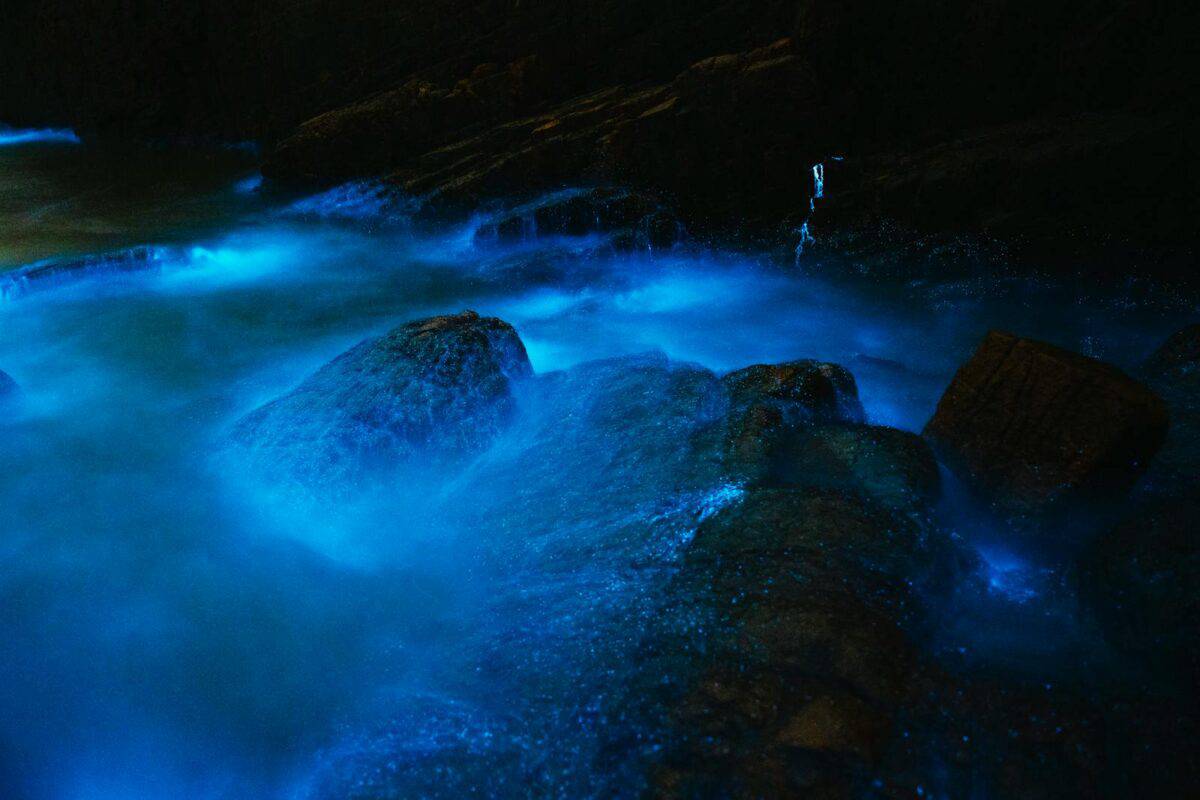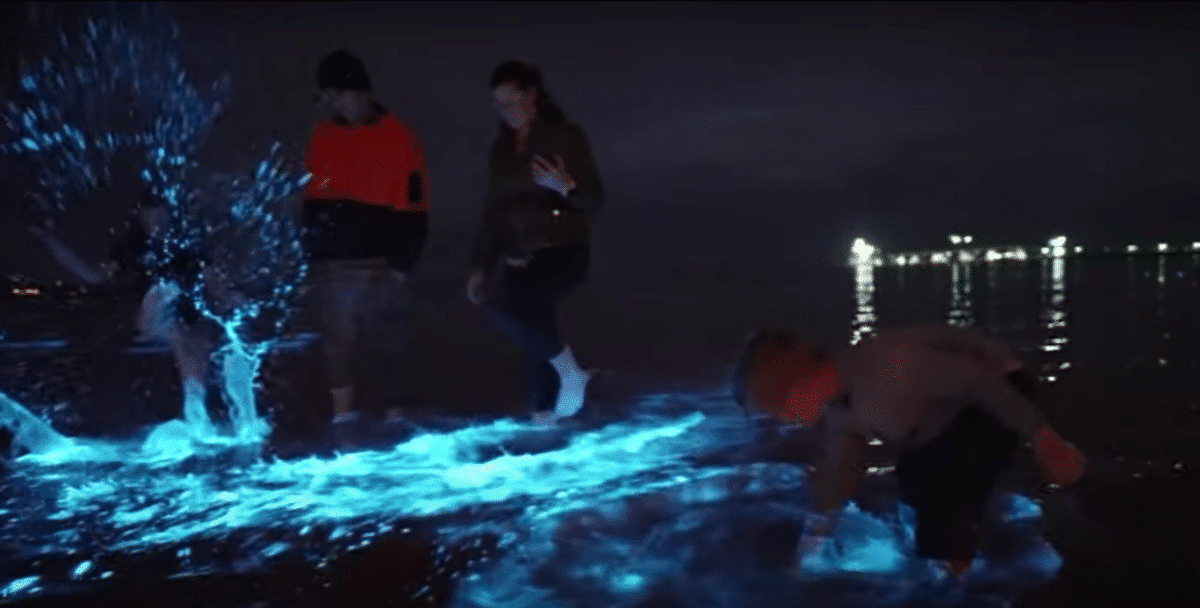Bioluminescent waves have become a captivating spectacle along many U.S. coastlines, enchanting observers with their ethereal glow. Often compared to flipping the switch on an underwater galaxy, this natural phenomenon has sparked curiosity and mesmerized onlookers. But what exactly causes these glowing waves, and why are they becoming more frequent along our shores? In this enlightening journey, we will explore the science, beauty, and ecological significance behind bioluminescent waves lighting up U.S. coasts.
Understanding Bioluminescence

Bioluminescence is the production and emission of light by living organisms, a stunning natural marvel rooted in chemistry. This phenomenon occurs when a chemical reaction within the organism emits light, typically a cool blue or green. At its core, bioluminescence requires the interaction of the light-emitting molecule luciferin and the enzyme luciferase. Together, under certain biological and environmental conditions, they produce a captivating luminescent glow that can be seen from the shore.
Who Creates the Glow?

While various marine organisms exhibit bioluminescence, the dazzling waves primarily result from the presence of tiny organisms called dinoflagellates. These single-celled marine plankton possess the ability to light up in response to motion or other stimuli, effectively creating a sea ablaze with twinkling lights as waves churn or when disturbed by boats and swimmers.
Why Now? Frequency of Occurrences

It’s not just a trick of fate that bioluminescent waves are increasingly being observed along U.S. coasts. Many factors can contribute to the occurrence and frequency of these glows. Algal blooms, known scientifically as population explosions of these bioluminescent organisms, can be influenced by nutrient levels in the water, water temperature, and even seasonal changes. With warming oceans and altered currents caused by climate change, opportunities for bioluminescence are increasing.
The Science Behind the Spectacle

The bioluminescence seen in plankton-like dinoflagellates is a form of communication. When stimulated by movement, the flashing light serves as a defense mechanism, a way to ward off predators by attracting larger predators to attack the initial threat. This complex web of interactions highlights the delicate ecological balance within marine ecosystems.
The Best Time and Place to Witness the Glow

For the best chance to witness bioluminescent waves, timing is crucial. These phenomena are typically visible during periods of warm weather, when waters are still, as turbulence can disperse the organisms responsible for the light. Nighttime, with its natural darkness, also provides an ideal backdrop for the luminescence to shine. While various coasts in Florida and California offer frequent displays, certain hotspots like San Diego’s Mission Bay and Florida’s Indian River Lagoon are known for their vibrant displays.
Impact of Light Pollution

Despite their bright appearances, bioluminescent waves are surprisingly sensitive to light pollution. Artificial sources of light, including streetlights and other urban lights, can dull the spectral glow by overwhelming the bioluminescent light. Conservation efforts encourage minimizing artificial lighting around coastal habitats to preserve the natural beauty of these oceanic displays.
A Tourist Attraction with Caution

While bioluminescent waves are undeniably beautiful, it’s important to approach them with respect and awareness. Tourists and locals alike are flocking to beaches to experience the otherworldly sight, often underestimating the impact of their presence. Excessive foot traffic, litter, and disturbances can harm these fragile ecosystems, underscoring the need for informed and cautious viewing practices.
Technological Advancements in Viewing

In response to the growing interest, technology has stepped in to provide new means for enjoying bioluminescent waves from afar. Drone photography, night-vision cameras, and improved smartphone capabilities allow enthusiasts to capture and share the beauty without directly impacting the environment. These innovations offer a more sustainable approach to appreciating the wonders of the natural world.
Cultural Significance and Inspiration

Bioluminescence has long captured the human imagination, inspiring folklore, art, and literature across cultures. From ancient stories to modern media, the depiction of glowing seas often symbolizes mystery, wonder, and the interconnectedness of life beneath the waves. This blend of science and art continues to inspire awe and deep appreciation for our planet’s lesser-understood phenomena.
Climate Change Considerations

The increased occurrences of bioluminescent waves also prompt important discussions on climate change. As sea temperatures rise and marine ecosystems shift, these glowing waters serve as both a warning sign and a reminder of the delicate balance we must maintain with our environment. Understanding bioluminescence in the context of a changing climate can aid in future conservation strategies.
Educational Initiatives and Citizen Science

As awareness grows, educational initiatives and citizen science projects emerge, promoting public understanding and involvement. Participating in local monitoring efforts, attending workshops, or engaging with online platforms devoted to bioluminescence research allows individuals to contribute to the conservation and appreciation of these luminous wonders, making science both accessible and actionable.
The Imperative of Preservation

Ultimately, the bioluminescent waves gracing our shores elevate a need for conscientious stewardship of marine environments. To ensure the vibrancy of these glowing coasts for future generations, we must prioritize sustainable practices, reduce human interference, and uphold the integrity of our planet’s waters.
In closing, bioluminescent waves are much more than just a captivating natural display. They signify the wonder and complexity of marine life, reflect the impacts of environmental change, and resonate deeply with the human spirit. By embracing both the scientific and spiritual allure of these sparkling waters, we discover not only the beauty of our oceans but also our profound role in preserving their mysteries.
- The Fish That Builds Nests - August 23, 2025
- The Insect That Ices Itself - August 23, 2025
- 15 Weirdest Things Fish Can Do - August 23, 2025

